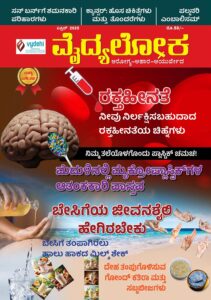Preventing seasonal viruses is very essential. Will winter make the pandemic worse?Once an effective and safe vaccine is available against SARS CoV 2, the way forward will be by vaccination of a large percentage of the population.


Pandemics are large scale occurrences of a disease, often involving multiple geographic areas. In the recent past, corona viruses have given us 3 such deadly pandemics- SARS CoV, MERS CoV and the ongoing SARS CoV 2. SARS CoV 2 has involved multiple countries during varied seasons- from the dry, cold winter of Wuhan, the south west monsoons of tropical India, the varied climate of Europe, to the hot summers of Southern USA.
The signature of seasonality thus far, seems to have eluded SARS CoV 2. What is the future trajectory? Will the virus hit us at will, at a climate of its choice, remains to be seen. If we see the constructs of pandemics, some features shine through. Pandemics usually involve new pathogens; highly infectious and easily transmissible pathogens; naive, susceptible population.
The pathogens may belong to known families like for instance Corona viruses which are well known to cause mild upper respiratory tract infections during winters, but the pandemic strains are new individuals of the same family, like SARS CoV 2. Susceptibility amongst the population, overrides the influence of seasons, when a new infectious agent takes roots, and so we see large scale incidents of the disease all through the year, and in all seasons.
The size of a directly spreading viral pandemic is multifactorial – the pathogen characteristics, it’s transmissibility, the availability of susceptible hosts, the length of immunity either naturally acquired, or induced by vaccines, treatability, effects of climate, spatial and social mixing patterns of populations – for instance at a school or theatre, cross protection from other viruses circulating in the population, are but a few factors. An important factor is definitely the ‘Non Pharmacological Intervention’ or NPI.
The transition from a pandemic stage to an endemic stage of a novel infectious disease, one which constantly persists in a population, is the expected progression. As prevalence of disease increases, more people develop immunity, the ‘herd immunity’ increases. This process can be aided by vaccination. The virus finds lesser susceptible hosts. The pandemic dies or converts to an endemic disease. It is said during pandemics, diseases like Flu affect the young and infants also. In endemic situations, Flu affects more of elderly and the infirm.
As susceptibility to the disease wanes, at least in high prevalence geographies, and the infectious disease becomes endemic, its trajectory may at least in part be determined by seasons. This is more obvious in other endemic infectious illnesses like chicken pox in summer, enteroviruses like polio in summer, influenza and RSV infections in winter.
SARS CoV 2 too, may be aided by the winter season.
Going by other coronavirus epidemiology, SARS CoV 2 too, may be aided by the winter season. The population characteristics of grouping indoors may aid in this. As we await a vaccine, one of the most effective ways of controlling the size of the pandemic, appears to be by policy enforcing, in the form of Non Pharmacological Interventions. Social distancing, hand washing, wearing face masks at all times in public, hygienic cough etiquette, creating awareness about cross ventilated living spaces, regular wiping of public surfaces are all strong endeavours towards that end. These aren’t new to us here in India.
Some of these, if not all, are a part of how we have lived from ancestral times – ‘Namaste’, instead of a hand shake being a prototype example. The stigma associated with the diagnosis, needs to be removed as well. Only then, will it be possible to test targetedly, prevent the spread, and treat appropriately. Only then will we have a true estimate of the scale of the pandemic.
Vaccination of a large percentage of the population.
Vaccines have been an important pillar of good health in recent times. This is seen quite clearly in the Paediatric population. Under-5 mortalities over the years, in India, has improved. A large part of this is due to prevention of infectious, life threatening diseases by a well-structured vaccination program that the government policy enforces. Once an effective and safe vaccine is available against SARS CoV 2, the way forward will be by vaccination of a large percentage of the population.
Vaccines induce active immunity. Successful vaccination campaigns in diseases like polio, diphtheria, tetanus, rabies, pandemic influenza amongst others, tell us that vaccinations are effective and may become the beginning to the healthy and robust life like our ancestors lived in the past … a life that we all await!


Dr Ganesh Varadaraja Kamath Kasargod
Paediatrician at Apollo clinic
Koramangala, Bengaluru











